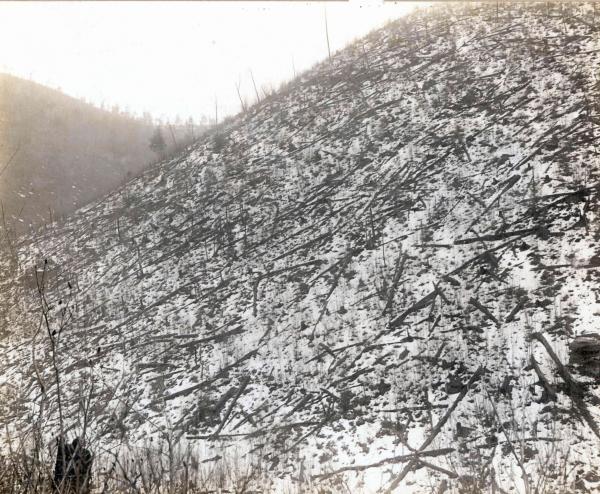
Credit: Pennsylvania State Archives
The people have a right to clean air, pure water, and to the preservation of the natural, scenic, historic and esthetic values of the environment. Pennsylvania’s public natural resources are the common property of all the people, including generations yet to come. As trustee of these resources, the Commonwealth shall conserve and maintain them for the benefit of all the people
Article 1 Section 27 of the Pennsylvania Constitution
It is not everyday that our state courts ponder the lessons of history. But this is exactly what the Pennsylvania Supreme Court did this December (2013) when it issued its opinion on the constitutionality of Act 13. Enacted by the legislature in 2012, the act extensively revised the Commonwealth’s Oil and Gas Act to accommodate the new boom in natural gas drilling. Among other things the amended legislation required that industrial oil and gas operations be permitted as a “use of right” in every zoning district in the state. It also adopted new setback requirements to protect waterways, but provided a waiver process that was un-appealable by residents or local governments.
Stating that drilling in the Marcellus Shale formation does violence to the landscape of the state, the court went on to consider various constitutional challenges to Act 13. Some of the most powerful parts of the decision delve into the Commonwealth’s Environmental Rights Amendment (See above). In announcing the judgment of the court, Chief Justice Ronald Castille noted that to date the state’s environmental rights jurisprudence is not well developed. This decision helps remedy this deficiency. The Chief Justice began by laying the following foundation.
It is not a historical accident that the Pennsylvania Constitution now places citizens’ environmental rights on par with their political rights. Approximately three and a half centuries ago, white pine, Eastern hemlock, and mixed hardwood forests covered about 90 percent of the Commonwealth’s surface of over 20 million acres. The Pennsylvania Lumber Museum, History, online at www.lumbermuseum.org/history.php. Two centuries later, the state experienced a lumber harvesting industry boom that, by 1920, had left much of Pennsylvania barren. “Loggers moved to West Virginia and to the lake states, leaving behind thousands of devastated treeless acres,” abandoning sawmills and sounding the death knell for once vibrant towns. Regeneration of our forests (less the diversity of species) has taken decades. See id
The opinion also proffers a sweeping statement about the scope of the environmental values considered by the amendment.
The terms “clean air” and “pure water” leave no doubt as to the importance of these specific qualities of the environment for the proponents of the constitutional amendment and for the ratifying voters. Moreover, the constitutional provision directs the “preservation” of broadly defined values of the environment, a construct that necessarily emphasizes the importance of each value separately, but also implicates a holistic analytical approach to ensure both the protection from harm or damage and to ensure the maintenance and perpetuation of an environment of quality for the benefit of future generations
This is a long and complex decision with multiple appellees and cross appellants. It deserves and I am sure will receive expert legal analysis – not just a few selective quotations. However, is it is invigorating to read an opinion that provides a historical context for the state’s Environmental Rights Amendment and makes such a sweeping statement of the landscape scale nature of amendment’s constitutionally protected values. As Pennsylvania confronts the next massive wave of resource extraction – natural gas drilling, its citizens now have a primer on the lessons from their past as well as some strong language on the commonwealth’s duty to conserve these values for the present and the future.
The forests may not be primordial, but they have returned and are beautiful nonetheless; the mountains and valleys remain; the riverways remain, too, not as pure as when William Penn first laid eyes upon his colonial charter, but cleaner and better than they were in a relatively recent past, when the citizenry was less attuned to the environmental effects of the exploitation of subsurface natural resources. But, the landscape bears visible scars, too, as reminders of the past efforts of man to exploit Pennsylvania’s natural assets. Pennsylvania’s past is the necessary prologue here: the reserved rights, and the concomitant duties and constraints, embraced by the Environmental Rights Amendment, are a product of our unique history.
And all of this language comes before Chief Justice Castille even turned to the merits in the case. To read the decision in its entirety goes to: Robinson Township, et al v. Pa. Public Utility Commission and Attorney General



